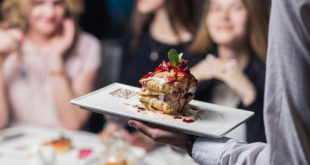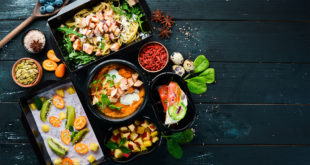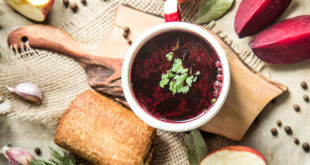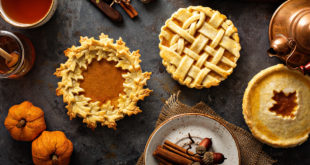Hungry Planet, What the World Eats from award winning author, Peter Menzel profiles 30 families from 24 countries and the food they eat during the course of one week. I came across this book on Time and the pictures revealed amazing stories that got me thinking: beyond forks, spoons and even chopsticks, does everyone in the world use what we Americans consider normal eating utensils?
United States
Like many countries food is a big part of the American culture. The major eating utensils of an American place setting include a spoon, fork and knife. And modern, hybrid versions have been introduced to the market – the most popular being the combination of the spoon and fork, the spork. And how about the sporf? It’s a combination of the spoon, fork and knife. Or the spife, a combination of the spoon and knife.
Asia
Chopsticks are used as traditional eating utensils in China, Japan, Korea, and Vietnam. Chopsticks are most commonly made of wood, bamboo or plastic; however, in the United States, most are made out of wood. Chopsticks are held in the dominant hand, between the thumb and fingers, and used to pick up pieces of food. You probably knew that part, but did you know there are different styles of chopsticks in different cultures?
- Chinese: Chopsticks are longer (at about 25 cm), thicker (with squared or rounded sides), and end in either tips that are wide, blunt, flat or tapered.
- Japanese: Shorter length chopsticks that taper to a finely pointed end. Japanese chopsticks are traditionally made of wood or bamboo and are lacquered. It is common for Japanese sticks to be of shorter length for women.
- Korean: Chopsticks are medium-length with a small, flat rectangular shape. Traditionally, they were made of brass or silver, and ornately decorated at the grip.
- Vietnamese: Long chopsticks that taper to a blunt point, quite like the Chinese style, and are traditionally lacquered wood or bamboo.
- Nepali: Shorter and more blunt chopsticks that are usually made of bamboo.
India

Would it disgust you or fascinate you to find out in India most meals are eaten with hands?
Hands are the main utensil in India, but there’s still some manners set aside for proper eating etiquette. Traditionally, the right hand is used for scooping, eating and mixing, as the left is used for cleaning (wiping the right hand, the mouth, picking up crumbs, etc.) and is considered dirty. A form of flat bread can also be used to scoop and soak up food.
Ethiopia
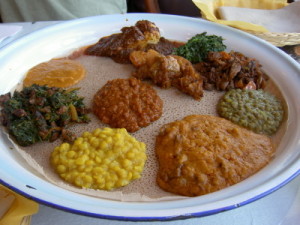
During a traditional Ethiopian meal, the food is served on a large piece of injera: a piece of flat-bread made from the grain teff. The injera itself serves as the plate and is used to scoop pieces of food up to the mouth. Ethiopian dining includes several rituals, like washing of hands before a formal meal and drink coffee at the table when the meal has ended.
Depending on what part of the world you’re visiting you may find yourself using forks, knives, spoons, fingers, chopsticks or injera to enjoy a meal. Dining etiquette will differ as much as the culture you may be visiting, so checking for cultural differences prior to vising a foreign country can save you the embarrassment of asking for the wrong utensil before it’s too late.
 Corner Booth Blog | TundraFMP Restaurant Supply, News & Equipment Blog
Corner Booth Blog | TundraFMP Restaurant Supply, News & Equipment Blog


